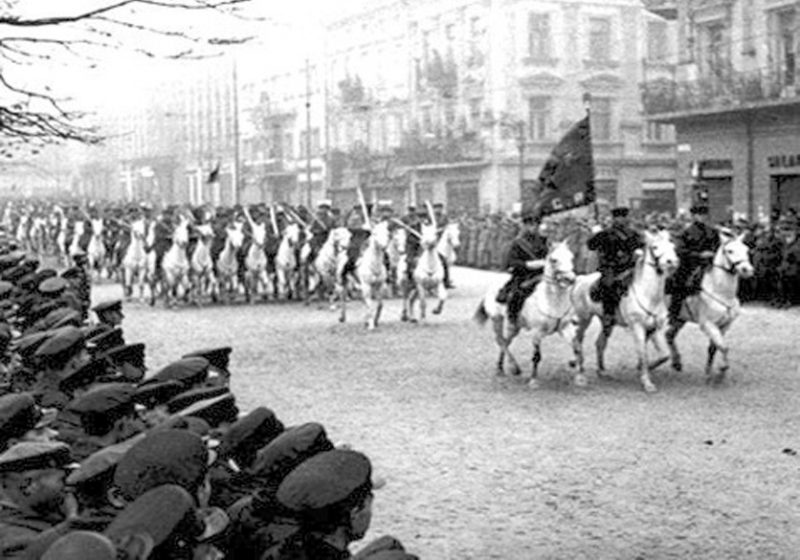The day was July 26, 1944, when the Polish city of Lwow was finally liberated by the advancing Red Army after fierce clashes with the Nazis. Most of the German occupiers either got killed or escaped the Soviet onslaught.
The city of Lwow, which is also famous for its German name Lemberg, is now called Lviv and is part of modern day Ukraine. The city was known for its overwhelmingly Jewish population that topped 110,000 before the Second World War broke out in 1939. By the time Germans invaded Poland and got control over Lwow, the total number of Jewish residents of the city had swelled to a whopping 220,000. When the Red Army finally managed to liberate the city in the summer of 1944, the Jewish population of the city had been reduced to only a few hundred.
Lwow’s relationship with Jews had been an old affair – it is reported that the first Jewish person moved to the city in the middle of the 13th century. From then onward the Jews of Lwow significantly contributed to the well-being of the town; they mostly worked in wine trading, as financiers and artisans, and some were traveling merchants. Very soon the city became a bustling metropolis of Hasidic and Maskilic culture.
During the First World War, the Jewish residents of Lwow were caught in the bloody scuffle between the Ukrainians and the Poles. However, when in 1918 the Galician city got merged into the freshly formed Independent Poland, the prosperity and peace of Lwow’s Jews returned and it quickly became a hub of Jewish religious and political intelligence.
The affairs on the brink of the Second World War were of a different nature due to a very tenacious alliance between the Nazis and Stalin. They split the occupied regions of Poland between them, and the eastern part including Galicia went to the Soviets. Considering the reputation of the Nazis and their ‘final solution,’ the Jewish population of the West started migrating towards Soviet-controlled regions, swelling the numbers in the eastern part. However, the move did not prove to a be a safer bet, as Germany declared war on the USSR and started advancing towards the east in 1941. The Soviets were not particularly friendly towards the Jews, who were forced to migrate deep into the USSR from the eastern Polish regions. Despite the fact that the living conditions for these migrating Jews were nowhere near ideal, it was these exiled Jews who would be most likely to survive the war.
Before establishing a secluded and barricaded settlement of appalling living conditions known as the ghettos of Lwow, Nazi occupiers encouraged their Ukrainian sympathizers to start cleansing the regions of the Jewish ‘menace,’ as they put it. According to the U.S Holocaust Memorial Museum website, in one month of July 1941 more than 6,000 Jews were slaughtered by German troops and Ukrainians siding with the Nazis.
The infamous Lwow ghetto was then established on November 8th in the northern part of the city, and all the Jews were then given an ultimatum to move into the ghetto by December 15th or face the consequences. Famous for breaking their promises, German troops murdered scores of elderly and sick Jews who were moving towards the ghetto while crossing the Peltewna Street bridge.
The plight of the 120,000 Jewish people who eventually ended up in the Lwow’s ghetto did not end with simply moving into the ghettos, as the living conditions in the ghettos were inhumane, to say the least. No medical facility and the acute shortage of food and drinking water killed many Jews, while the survivors were psychologically tortured with the presence of corpses in the streets, their rotting smell spreading all through the ghetto. On top of all this hell, German troops carried out three clean-up operations in the Lwow ghetto, during which scores of Jewish people were either shot or were deported to the Belzec extermination camp to die an even more painful death.
In June of 1943, the Germans decided to liquidate the ghetto in Lwow. They were met with small pockets of resistance from the Jewish rebels fighting for their lives but were quickly overpowered by the German troops; a small number of German police were killed by the Jewish rebels during the liquidation process.
When Lwow was finally liberated by the advancing Red Army, the total number of Jews in the region had dramatically reduced to only 2,571 persons, most of whom were either malnourished or psychologically damaged as a result of the ordeal they had to face under Nazis. After the war, these Jews either moved to the newly-founded Israel or migrated to the United States.
